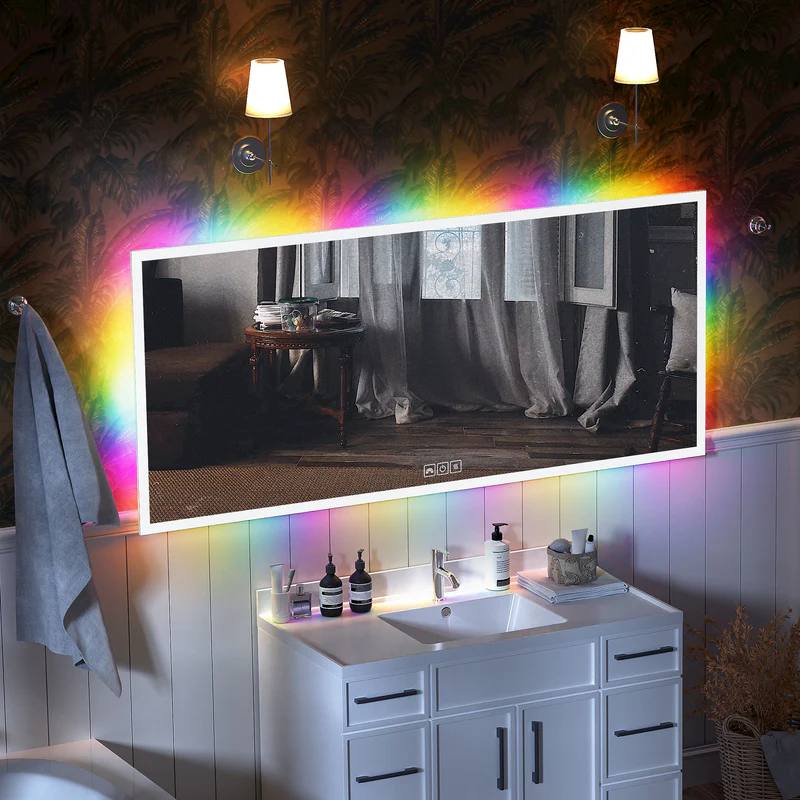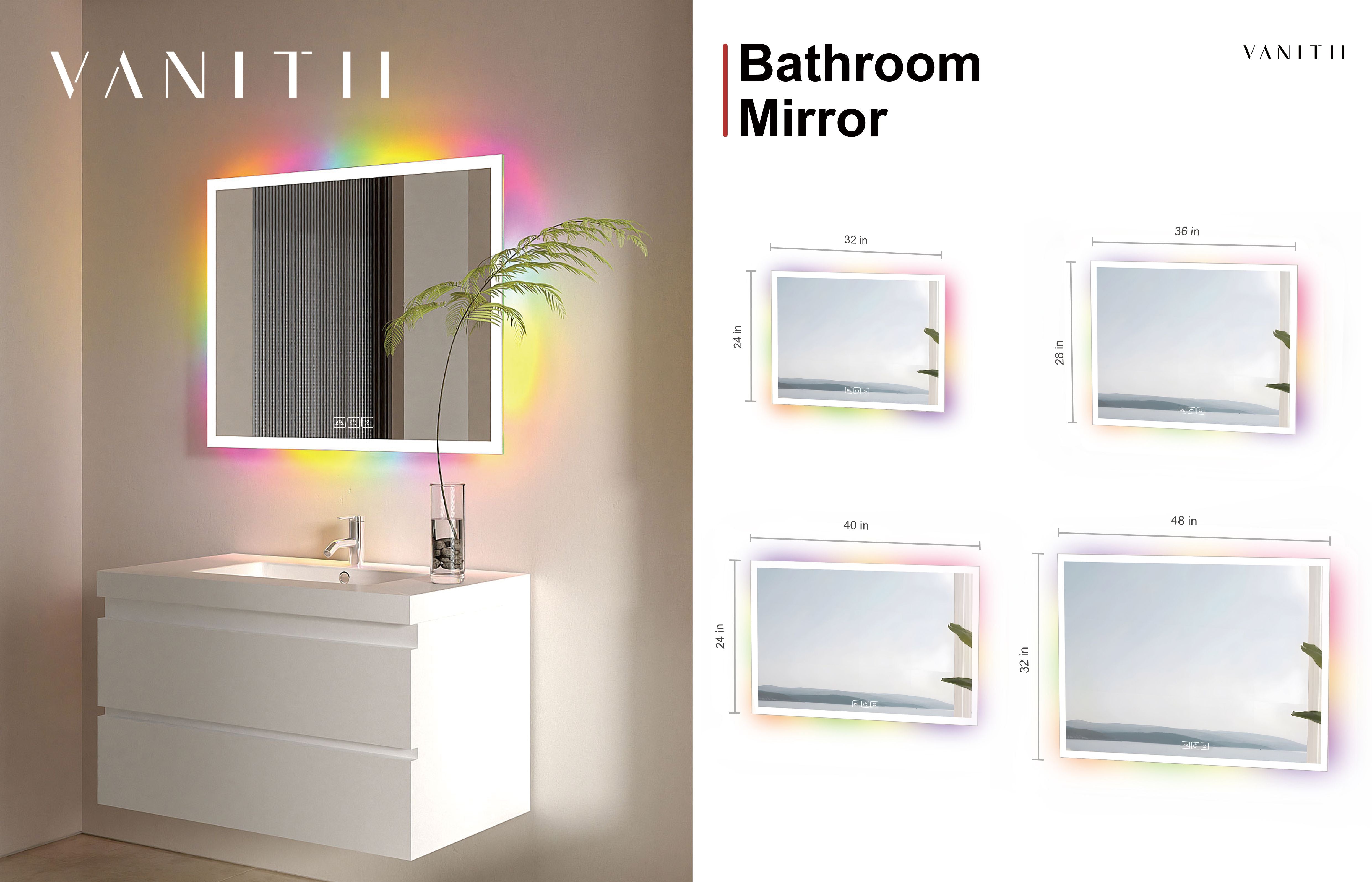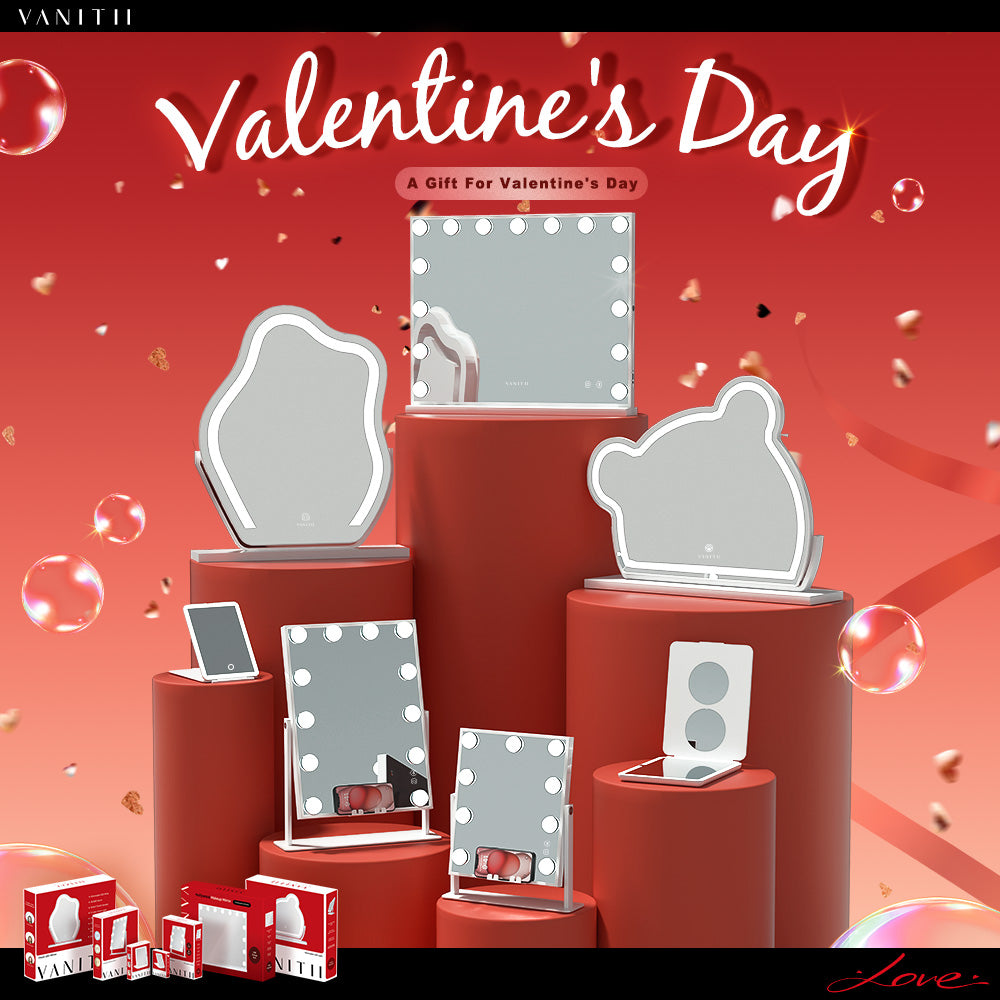Your bathroom mirror's lighting affects how well you can see yourself while getting ready each day. The wrong lighting can make it hard to shave properly or put on makeup evenly, while good lighting helps you see clearly and start your day right. The best lighting setup carefully considers the light's placement, color, and quality to remove shadows and show colors accurately, all while looking good in your bathroom. We'll cover what makes mirror lighting work well so you can choose the right option for your needs.
What Makes Good Bathroom Mirror Lighting?
Good lighting around your bathroom mirror has two key parts: the right amount of brightness and accurate color display. Both factors affect how well you can see yourself during daily grooming tasks.

How Much Light Do You Need for Your Mirror?
A well-lit bathroom mirror needs between 1,000 to 1,800 lumens in total - similar to a 75-100 watt regular bulb. This amount of light works well for daily tasks like shaving and applying makeup.
If you have a bigger bathroom or multiple mirrors, plan for 75-100 lumens per square foot around the mirror area. When using several lights, spread the brightness evenly to avoid creating shadows.
What is CRI and Why Does it Matter?
The Color Rendering Index (CRI) shows how well a light bulb displays colors compared to natural sunlight. For bathroom mirrors, look for bulbs with a CRI of 90 or higher. With high CRI lighting, you'll see skin tones and colors as they really are, which helps with makeup application and grooming.
Most LED packages show their CRI number. Basic LEDs often have a CRI around 80, but bathroom tasks benefit from higher-quality bulbs. Many lighting brands make special bathroom LED bulbs with high CRI ratings that work well for mirror lighting.
Where to Place Mirror Lights
Mirror light placement strongly affects how well you can see yourself and how the light falls on your face. The right position reduces shadows and creates even lighting for your daily tasks.
Top-Mounted Lights: Above Your Mirror
Placing lights above your mirror casts light downward onto your face. This position works well in small bathrooms and suits basic grooming tasks. However, top-only lighting can create shadows under your eyes and chin, making detailed tasks harder.
Side Lights: Next to Your Mirror
Side-mounted lights at eye level provide good facial lighting with fewer shadows. These lights work best in pairs, one on each side of the mirror. Side lighting helps you see clearly for tasks like shaving or applying makeup, but requires more wall space and careful placement.
Perimeter Lighting: All Around Your Mirror
Lights around the entire mirror create the most even lighting. This setup eliminates most shadows and provides consistent light from all angles. While perimeter lighting offers the best results, it costs more.

Which Light Color Works Best for Bathroom Mirrors?
For most bathroom mirrors, lights with a color temperature of 3000-3500K work best - this balanced white light helps you see clearly while still looking natural. Here's what you need to know about choosing the right light color.
Warm Light vs. Cool Light
Warm light (2700-3000K) gives off a yellow-orange glow like traditional bulbs. This light feels cozy and flattering but might not show colors clearly. Cool light (4000-5000K) produces a bright white or bluish light similar to daylight. This light shows details better but can feel harsh.
Best Light Colors for Different Times and Tasks
For everyday morning routines, lights between 3000-3500K work well. This middle range combines the comfort of warm light with the clarity of cool light. If you often apply makeup or need to see fine details, 4000K lights show colors most accurately. Many modern bathroom lights come with adjustable color settings, letting you change the light color based on what you're doing.
Morning vs Evening
Pick lights that match the main times you use your bathroom. Morning routines benefit from cooler lights that wake you up and show details clearly. Evening routines work better with warmer lights that help you relax. If you share the bathroom, adjustable lights help meet everyone's needs.
Most Efficient Light Bulbs for Bathroom Mirrors
LED lights are the best choice for bathroom mirrors, offering the longest life and lowest energy use. Their advanced technology provides excellent light quality while using minimal power. Here's a detailed look at your lighting options.
Common Bulb Types
LED bulbs run for 20,000 to 25,000 hours - about 15 to 20 years of normal bathroom use. They turn on instantly and work well with dimmer switches. Traditional incandescent bulbs only last 1,000 hours, or about one year, and grow hot when used.CFL bulbs last around 8,000 hours but take time to warm up to full brightness and contain mercury that needs special disposal.
Energy Use
A typical bathroom vanity needs 4-6 bulbs. LEDs use only 12 watts to create the same amount of light as a 60-watt incandescent bulb. CFLs use about 14 watts, performing better than incandescent bulbs but not quite matching LED efficiency. Most LED bulbs also come with 3-5 year warranties and maintain their brightness throughout their lifespan.
Environmental Benefits
Four LED bulbs in a bathroom vanity save about 750 pounds of carbon emissions over five years compared to incandescent bulbs. They also reduce landfill waste since one LED bulb replaces 25 incandescent bulbs over its lifetime. While CFL bulbs also save energy, their mercury content requires careful recycling - most hardware stores offer free CFL recycling services. Incandescent bulbs turn 90% of their electricity into heat instead of light, wasting energy and adding to cooling costs in warm weather.
Important Factors for Your Final Lighting Decision
Before choosing your bathroom mirror lights, consider these practical factors that affect how well the lighting works in your space.
Bathroom Size
Small bathrooms need less lighting - a simple light above the mirror or two side lights usually work well. Large bathrooms need more lights to cover the whole space clearly. In bathrooms with low ceilings, choose flat or slim fixtures. Tall ceilings give you more options for hanging lights.
Window Position
Put mirror lights on walls that don't have windows. If your bathroom gets lots of morning sun, use lights you can dim. Bathrooms with small windows need more artificial light. North-facing bathrooms usually need brighter lights since they get less sunlight.
User Needs
Older people generally need brighter light to see clearly. If people of different heights share the bathroom, choose lights that work well for everyone. For busy morning schedules, add enough lights so two people can use the mirror area together.
Wiring Setup
Simple lights above mirrors are usually easy to install with existing wiring. Adding side lights means putting new wiring in the walls - you'll need an electrician for this. LED strips might need special mounting pieces. Make sure your electrical system can handle new lights. Some lights need special ratings for bathroom safety.

Get the Right Mirror Lights for Your Bathroom!
The best bathroom mirror lighting comes from choosing the right combination of brightness, color, and position for your needs. Start with LED lights that provide 1,000-1,800 lumens and a CRI above 90 for clear, natural lighting. Place lights at eye level on both sides of the mirror when possible, and choose a color temperature around 3000-3500K for balanced light. Consider your bathroom's size, windows, and who uses the space to fine-tune your choice. With proper planning, you can create lighting that makes your daily routines easier while saving energy and looking good in your space.




Leave a comment
This site is protected by hCaptcha and the hCaptcha Privacy Policy and Terms of Service apply.